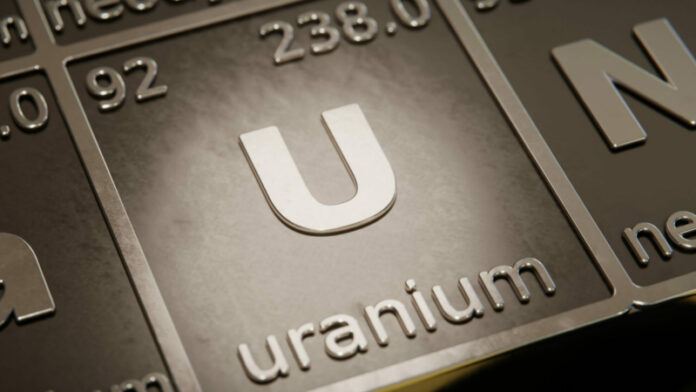
THE uranium market is finally beginning to blossom. Although this should be no great surprise – it’s been coming for years – it has nonetheless taken the seismic geopolitical shock of Russia’s invasion of Ukraine to bring it about.
The consequent disruption to energy supply has resulted in a reassessment of planned nuclear reaction decomissioning, according to a report in the Financial Mail.
Belgium, for instance, plans to extend the lives of its two newest reactors rather than exiting nuclear, and in the UK France’s state-owned electricity utility EDF is exploring the life extension of two nuclear plants beyond 2024.
In the US, meanwhile, certain ‘at-risk’ nuclear plants have been handed financial support: the production tax credit provided by the Inflation Reduction Act, and $6bn in dedicated support in the Infrastructure Investment and Jobs Act.
As the US and Europe comprise half of global nuclear reactor activity, these shifting attitudes among developed economies is having a positive effect on uranium. Spot prices for the mineral are 15% higher this year as investors recognise that stable Western reactor demand and nuclear capacity growth in China amounts to genuine net growth. Previously, the expectation was that uranium demand was shifting from west to east.
This year represents the eighth in a row that European utilities have drawn down inventories of the mineral. Recognising a shift was afoot, the Canadian investor Sprott Asset Management launched a physical uranium trust in 2019 which today holds an estimated $3bn worth of the radioactive material. The trust has done well: the uranium oxide price is 94% higher since 2020, easily outgunning the S&P Index (up 16% while also acknowledging the summer sell-off) whereas gold is up 9.45% over that period.
Sprott’s fund is one way to access the uranium market as well as Global X Uranium ETF. Local equity exposure to uranium is admittedly hard to find. BHP is one: its Olympic Dam mine in Australia – primarily developed for copper – is one of the largest uranium producers in the world. It produced 2.4 million pounds of the material in its 2022 financial year (ended-June). But BHP’s earnings – as expected of a diversified miner – are flattened by its portfolio approach. Iron ore, copper and coal production has the greatest bearing on the performance of its shares.
The uranium price has risen steeply and crashed as precipitously before. It was the ruin, for instance, of South African mining entrepreneur Neal Froneman’s SXR Uranium One, a Johannesburg-listed company that subsequently fell on hard times in 2008.
But there are signs that this time might be different for uranium.
Russia is only the world’s sixth largest uranium producer, but it plays a larger role in uranium enrichment. The country controls about 40% of global enrichment capacity and roughly 31% of European and 27% of US delivered uranium supply. This is potentially important because excess enrichment capacity is a secondary form of uranium supply in its own right. While sanctions on Russian uranium supply have not yet been applied, self-sanctioning is beginning to shut off this important source of secondary supply.
Supply is beginning to respond. Namibia’s Paladin Energy is due to bring its Heinrich-Langer mine into production next year contributing to an expected 18% increase in the mineral’s production. Nonetheless, continued Russian sanctions and another year of utility draw-down of inventories is likely to see another pulse in uranium prices, according to Morgan Stanley.
“We forecast an average spot price of $58/lb in 2023 and $65/lb by the fourth quarter of 2023,” it said in a recent report. The window may be brief, however. Responding supply could cap prices in the medium-term. It thinks uranium may average $45/lb by 2025. While this is not the stratospheric $11 to $140/lb gains of the early 2000s, uranium’s more measured price gains could help put the glow back into South African production.











